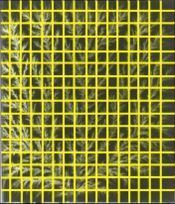 | ||
Self-similarity of complex networks
Many real networks have two fundamental properties, scale-free property and small-world property. If the degree distribution of the network follows a power-law, the network is scale-free; if any two arbitrary nodes in a network can be connected in a very small number of steps, the network is said to be small-world.
Contents
- Self similarity of complex networks
- The methods for calculation of the dimension
- The box counting method
- The cluster growing method
- Box counting and renormalization
- Skeleton and fractal scaling
- Real world fractal networks
- Other definitions for network dimensions
- References
The small-world properties can be mathematically expressed by the slow increase of the average diameter of the network, with the total number of nodes
where
Equivalently, we obtain:
where
For a self-similar structure, a power-law relation is expected rather than the exponential relation above. From this fact, it would seem that the small-world networks are not self-similar under a length-scale transformation.
However, analysis of a variety of real complex networks shows they are self-similar on all length scales, a conclusion derived from measuring a power-law relation between the number of boxes needed to cover the network and the size of the box, so called fractal scaling.
The methods for calculation of the dimension
Generally we calculate the fractal dimension using either the box counting method or the cluster growing method.
The box counting method
Let
This means that the average number of vertices
By measuring the distribution of
The cluster growing method
One seed node is chosen randomly. If the minimum distance
where
These methods are difficult to apply to networks since networks are generally not embedded in another space. In order to measure the fractal dimension of networks we add the concept of renormalization.
Box-counting and renormalization
To investigate self-similarity in networks, we use the box-counting method and renormalization. Fig.(3a) shows this procedure using a network composed of 8 nodes.
For each size lB, boxes are chosen randomly (as in the cluster growing method) until the network is covered, A box consists of nodes separated by a distance l < lB. Then each box is replaced by a node(renormalization). The renormalized nodes are connected if there is at least one link between the unrenormalized boxes. This procedure is repeated until the network collapses to one node. Each of these boxes has an effective mass (the number of nodes in it) which can be used as shown above to measure the fractal dimension of the network. In Fig.(3b), renormalization is applied to a WWW network through three steps for lB = 3.
Fig.(5) shows the invariance of the degree distribution P(k) under the renormalization performed as a function of the box size on the World Wide Web. The networks are also invariant under multiple renormalizations applied for a fixed box size lB. This invariance suggests that the networks are self-similar on multiple length scales.
Skeleton and fractal scaling
The fractal properties of the network can be seen in its underlying tree structure. In this view, the network consists of the skeleton and the shortcuts. The skeleton is a special type of spanning tree, formed by the edges having the highest betweenness centralities, and the remaining edges in the network are shortcuts. If the original network is scale-free, then its skeleton also follows a power-law degree distribution, where the degree can be different from the degree of the original network. For the fractal networks following fractal scaling, each skeleton shows fractal scaling similar to that of the original network. The number of boxes to cover the skeleton is almost the same as the number needed to cover the network.
Real-world fractal networks
Since fractal networks and their skeletons follow the relation
we can investigate whether a network is fractal and what is the fractal dimension of the network. For example, the WWW, the human brain, metabolic network, protein interaction network (PIN) of H. sapiens, and PIN of S. cerevisiaeare considered as fractal networks. Furthermore, the fractal dimensions measured are
Other definitions for network dimensions
The best definition of dimension for a complex network or graph depends on the application. For example, metric dimension is defined in terms of the resolving set for a graph. Definitions based on the scaling property of the "mass" as defined above with distance, or based on the complex network zeta function have also been studied.
For networks embedded in real space, one can define a dimension that characterizes the number of nodes that can be reached with an average Euclidean distance.
